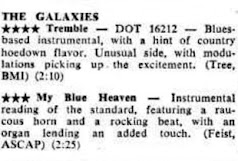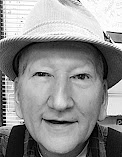The popular group formed in the fall of 1966 with all five original members attending the same high school in Rockford before coming to ISU.
Saturday, December 17, 2022
The Lykes Of Us (Bloomington-Normal)
The popular group formed in the fall of 1966 with all five original members attending the same high school in Rockford before coming to ISU.
Sunday, December 11, 2022
Mike Murphy, The One-Eyed Jacks & The Lost 1971 Album
Instead, another up-and-coming Champaign-Urbana group produced by Paul Leka at his Bridgeport, CT studio had their debut album hit record stores later that same year. That band, of course, was REO Speedwagon. The rest, as they say, is history.
- Who Wants To Be The Next In Line 2:57
- La-La Song 4:43
- She's My Girl 4:08
- Before You Turn And Walk Away 2:29
- Georgia 6:03
- I Want Love 4:33
- Little Bit Of Mother 3:50
- You've Got Your Nerve 6:00
- Look What You've Done 3:26
- Because It's You 4:22
- Ain't Got Time For Trouble 3:50
Friday, November 18, 2022
The Nightmares on Fredlo (Quad Cities)

Thursday, November 3, 2022
Richie Deran, Dave Parkinson & Pontiac Records (Canton)
Deran, who wrote and sang both songs, was from Burlington, Iowa. Most of the members of the New Tones were also from the Burlington-area including Don Bowman on guitar, Larry Gustin on guitar and Bob Baldridge on drums. The one exception was saxophone player Dave Parkinson who was from Canton, Illinois.
According to a 2012 article in the Canton Daily Ledger, the Pontiac Record Company was owned by Canton businessman Jim Aloian. The Deran record appears to have been the label's only release.
 |
| A few color variations of the single exist as well as reproductions and bootlegs. |
Feb 22, 1960: Illinois State Normal University Ballroom (Normal)
 |
| Parkinson (with sax) to the left of JB |
Thursday, October 27, 2022
The Galaxies (Decatur / Mt. Zion)
Wednesday, October 19, 2022
Bobby Carter & Cardell Records (Bloomington)
- "Before We Part and Go" / "If You're Gonna Shake It" (1960)
"Destiny, I Love You" / "Run, Run, Run" (1961)
Given the Danville connection, it is likely that A. Miller is Arlie Miller who recorded his own single in Danville around the same time and like Carter had been a member of the Varieteers. Miller's single "Lou Ann" / "You're The Sweetest Girl" was released on the Lucky label. Jim Foley, another member of The Varieteers, also released a single on Lucky in 1960.
Arlie Miller would go on to open the Midnite Sound Studio in Danville and start Milky Way Records with Arlie Neaville (aka Dean Carter) a few years later. As for H. Sherman and Johnny Lawrence, it is unknown if they were from Bloomington, Danville or somewhere else entirely.
For the next decade or so, Bob Carter's musical activities are also uncertain. In 1973 however, he moved to Nashville and recorded a demo that eventually landed him a deal with Oweman Records. It is not clear whether he ever released anything for the label. He did however have one single released on the Royal American label: "As The Fire Grows" b/w "Soakin' Up Suds."
Thursday, May 12, 2022
Rites of Spring at Illinois State University 1972-1977
- The Guild
- Spencer Davis
- Soul Messengers
- Grenshaw
- Tayles
- Cajun Desire
- Grin
- Ebony Revue
- Probe
- Head East
- The Guild
- Gerry Grossman
- ISU Statesmen
- Ricky Spitfire
- Ebony Rhythm Funk Campaign
- Siegel-Schwall
- If
- Adrian Smith
- Frijid Pink
- Mighty Joe Young
- Country Joe McDonald
- Richie Havens
- Poobah
- Joe Vitale's Madmen
- Mason Proffit
- Golden Earring
- Heartsfield
- Games
- Thin Lizzy
- ISU Black Arts Jazz Band aka Creative Arts Ensemble
- The Notations
- Mary Travers
- Bonnie Koloc
- The Undisputed Truth
- Charlie Daniels
- REO Speedwagon
- Rites was not, and never could be, a controllable event.
- The potential for serious injuries or fatalities is high.
- The laws of Illinois and the regulations of ISU were repeatedly disregarded.
- The cost of the event, direct and indirect, was very high.
- Damage to university grounds and buildings has been severe.
- The event offers no apparent contribution to the educational mission of the university.
Wednesday, May 11, 2022
Mod 4 Presentation - May 11, 2022
Thursday, May 5, 2022
WESN Show #72
| ARTIST | TRACK | LABEL | YEAR | TOWN / CITY |
| Freddie Tieken & The Rockers | You Can't Sit Down | Standfire | [1965] | Quincy |
| Backstreet Majority | Running From People | unreleased | 196? | Bloomington/ Champaign |
| Pisces | A Flower For All Seasons | Numero | 1969 | Rockford |
| The Inside Out | Fire | Out | 1968 | Monmouth |
| The Knights Of Soul | Different Strokes | Drocer | 1968 | Springfield |
| The Ravins | I Had A Feeling | Syndicate | 1967 | Gibson City |
| The Creepers | Elizabeth | C.R.C. | 1966 | Granite City |
| The Vengeance | You Cheated On Me | Thor | 1966 | LaSalle-Peru |
| The Stingrays | In The Midnight Hour | Van | 1967 | Springfield |
| $1,000,000 War Babies | You Don't Know Like I Know | Dante | 1968 | Champaign-Urbana |
| The Iron Gate | Get Ready | Mobie | 1968 | Rockford |
| Junior Jive Kings | Hold On I'm Coming | Drocer | 1968 | Springfield |
| The Blue Boys | I Know | Feature | 1966 | Sycamore |
| The Mod 4 | Midnight Hour | [Fredlo] | 1967 | Aledo |
| Johnny & The Impalas | It's Been A Long Time | Drocer | 1968 | Springfield |
| Night Riders | I Ain't Gonna Eat Out My Heart Anymore | Drocer | 1968 | Springfield |
| Rod & The Satalites | I'm Telling You Right Now | Irish | 1965 | Quincy |
| The Cavaliers | Open The Door To Your Heart | Drocer | 1968 | Springfield |
| The One-Eyed Jacks | Getting In A Groove | Roulette | 1969 | Champaign-Urbana |
| Mystery Meat | Profiles | Director | 1968 | Carlinville |




































